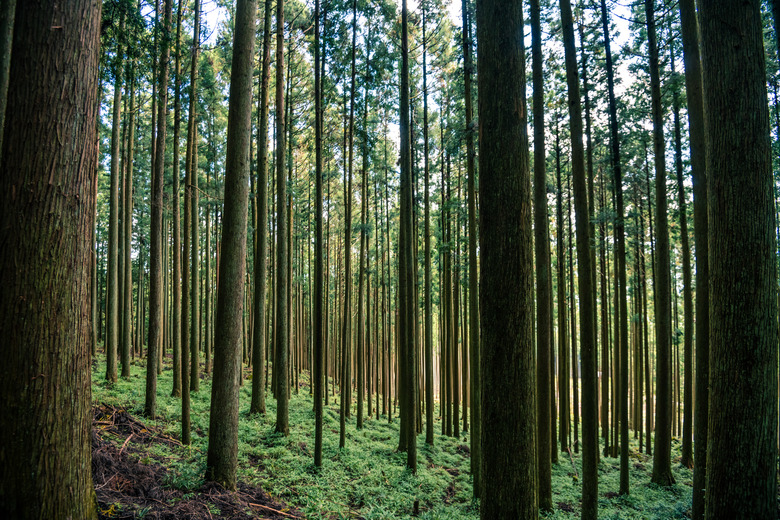How Do Trees Move?
The Facts
The Facts
As large as some trees are, it's hard to think of them as movable, but they do, albeit slowly. With environmental changes and human interaction, trees have moved for survival's sake.
Scientists cite global warming as being responsible for the northern migration of trees since the ice age. In the 20th century alone, analysis data from migration patterns show a 60-foot difference in locales for trees in six French mountain ranges. This is just one area in which migration patterns are evident.
Bird migration patterns have also had an impact on our moving trees, especially birds that take tree seedlings and bury them in different locales.
Identification
Identification
When trees migrate, they move in groups, like whole forests. New areas start to take root and expand, while the original areas shrink. Seedlings moved by the wind or by birds play a part in this migration.
Climate changes play a significant part in determining whether soil compositions and air-moisture ratios are conducive to a particular tree species' growth. Swedish researchers report a substantial movement of forests' tree lines over the past two decades. Researchers state that 75 percent of this change is due to the increase in greenhouse gases.
Evolution
Evolution
The first trees existed under water around 500 million years ago. It wasn't until 170 million years later that trees were able to adapt and exist on land. Underwater trees didn't require as much protection as the land-adapted trees. In order to go from a water-based environment to dry soil and air, trees grew the protective bark we see today.
Gravity issues also came into play, requiring trees to construct a supportive framework of rings, branch collars and internal layerings of wood. These coverings served to shield the metabolic processes of the trees in terms of moving water and nutrients from the earth up to the leaves. This process of adaptation spanned over 100 million years.
Effects
Effects
Studies consistently show that tree migration will occur in changing climate conditions. As trees are a huge component within any ecosystem, the movement of trees will impact the effects of global climate changes. Tree migration is an adaptation mechanism. As with any other surviving organism, adaptations are made in an effort to fit inside the prevailing circumstances.
Trees will continue to provide us the benefits that they always have; however, their benefits will change in line with what's going on in the world around them. As trees continue to migrate northward, they will in effect, take their clean air with them.
Cite This Article
MLA
Jeanty, Jacquelyn. "How Do Trees Move?" sciencing.com, https://www.sciencing.com/how-do-trees-move-13652489/. 28 October 2008.
APA
Jeanty, Jacquelyn. (2008, October 28). How Do Trees Move?. sciencing.com. Retrieved from https://www.sciencing.com/how-do-trees-move-13652489/
Chicago
Jeanty, Jacquelyn. How Do Trees Move? last modified August 30, 2022. https://www.sciencing.com/how-do-trees-move-13652489/
